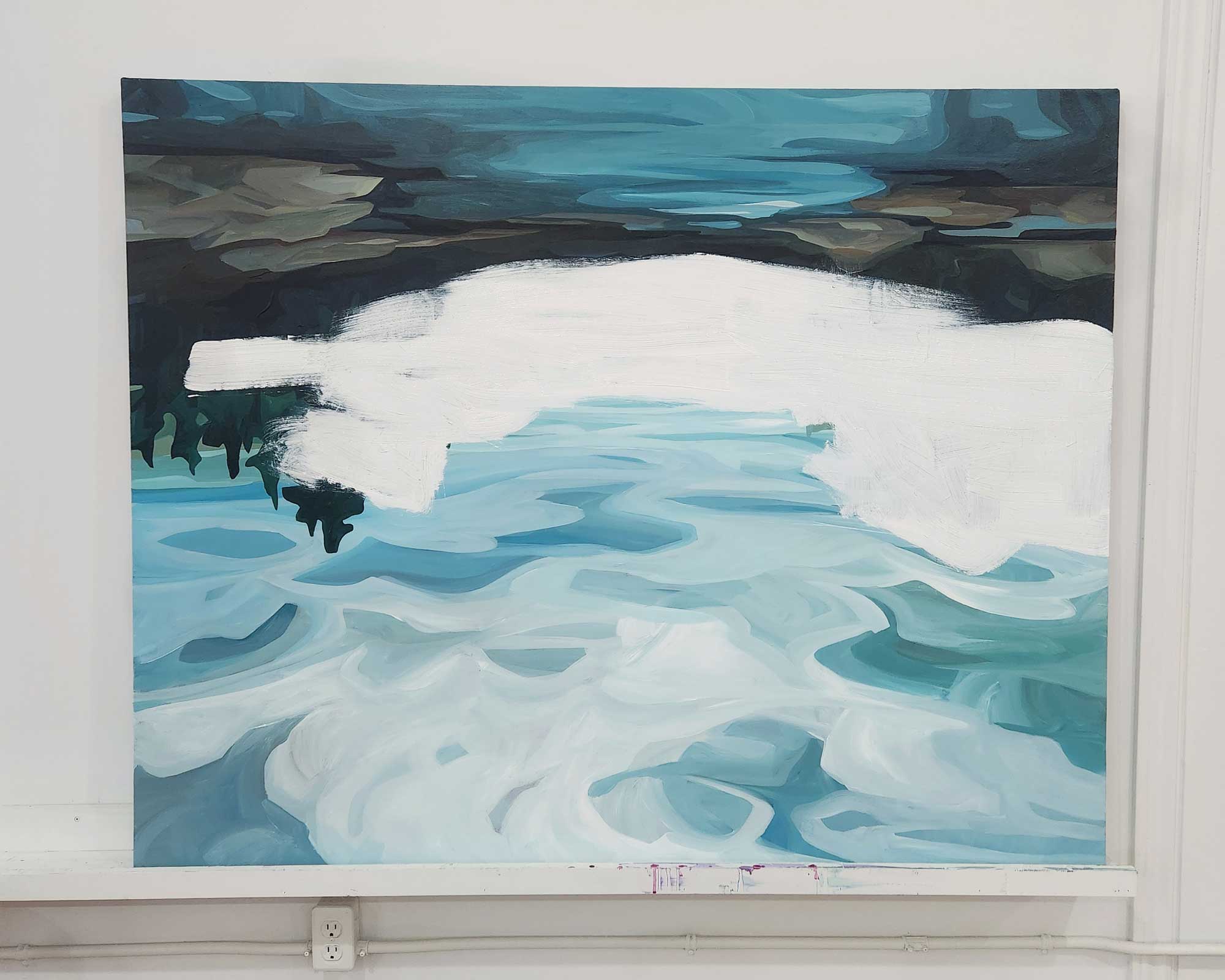Fun fact: Did you know I often paint my canvases upside down?
(To clarify, not me - the canvas!)
I really do! Simply turning the canvas upside down is the easiest way to rethink the composition from a structural point of view and unstick my imagination when I’m stuck. It's also a great help when I need to be objectively critical of my own work.

Really?
Yes! When a painting is upside-down, I feel less connected to the subject and less focused on identifying the image as a whole. This shift allows my brain to open to new possibilities and different alternatives immediately. A tree upside-down is no longer just a “tree”—it becomes a series of shapes and colours.

Viewing the painting this way makes it much easier to identify problem areas without being caught up in the “thing” itself. I can more easily spot weakness in the composition, areas where colours might be fighting one another, where light and dark contrasts feel off, or where things are unbalanced. Breaking the image down into its underlying components in this abstract way is incredibly helpful.
If I can see what's not quite right, I’m that much closer to what is!
Plus, it's just fun.

When it comes to my abstracts, I'm constantly turning my paintings around and around as I go. I rarely start and end with the same orientation (unless I’m working closely from a sketch...but that has probably been turned around a thousand times too). At any point in the painting process, what I thought was the top might end up as the bottom (although to be honest, some never really end up with a definitive "up" or "down" - I sign as I best see fit but leave the how-to-hang decision up to collector).
 |
 |
My abstracts are organic, ever-changing and ever-evolving creations and I've learned not to get too married to any one set thing because something better might be just one sideways blob ahead.
As you likely well know by now, curiosity and exploring colour are the cornerstones of my work. I try to stay loose and open to any and all possibilities along the way. If I’m at all questioning or not liking what's happening on the canvas, simply turning it around often clarifies what could look, or feel, better. It's actually kind of amazing how mistakes jump out at me from an upside-down perspective.
All to say, turning my canvas around throughout the process immediately de-personalises the subject and helps me see what's really there—directional lines, shapes of light and dark, patterns and forms of colour etc. —and what I need to improve on. It's a simple trick that can take a painting from good to great.





